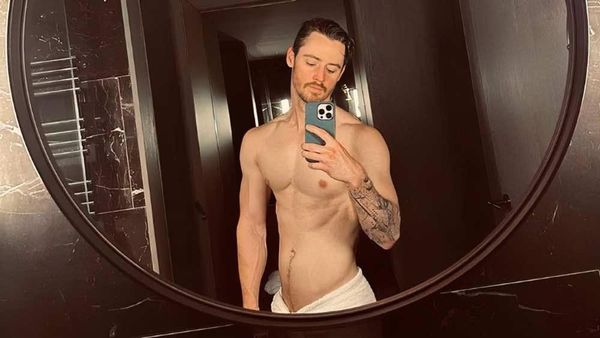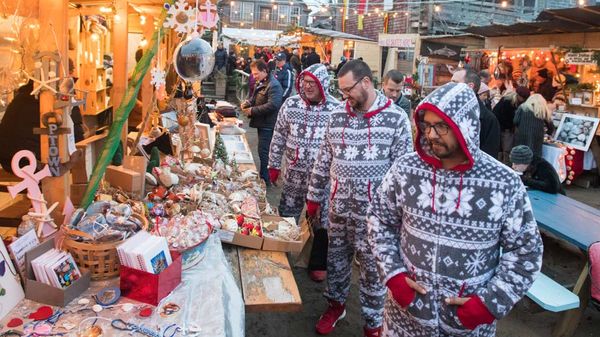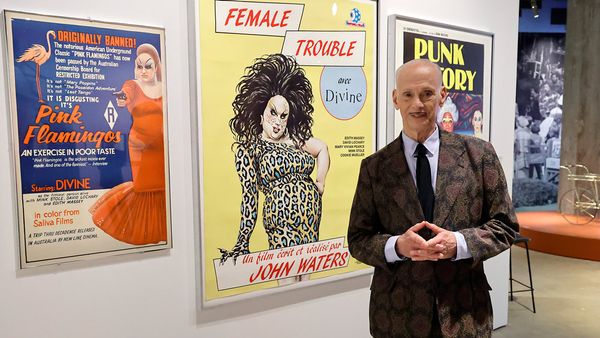
April 23, 2017
Larry Sultan in Living Color
Sura Wood READ TIME: 4 MIN.
Visual acuity and verbal eloquence are abilities that rarely inhabit the same person in equal measure; photographer Larry Sultan is one of the exceptions to the rule.
From the early 1970s until his death in 2009, Sultan was an important fixture in the Bay Area, where he lived and taught for over three decades (at SFAI & CCA), but the SoCal pop culture wonderland of his San Fernando Valley youth remained an inspiration. The scope of his career is the subject of "Larry Sultan: Here and Home," a new show at SFMOMA.
Organized by project, it samples his 35-year output from early collaborative ventures and black & white photos to his staged documentary-style images. Three narrative bodies of work, executed in saturated "living" color - "The Valley," "Homeland," and the remarkable "Pictures from Home" (also published in book form) - are complemented by the artist's engaging written reflections on himself and the work at hand. Rather than an afterthought or an affectation, his commentary and insights are an integral part of the viewer's experience.
Influenced by a West Coast version of Conceptualism, "Evidence" (1975-77), exploring appropriation and context, exemplifies work Sultan did with Mike Mandel, a fellow grad student he met in 1973 at the San Francisco Art Institute. After carefully selecting black & white pictures culled from the archives of corporations and government institutions like NASA and the EPA, they produced a compendium of thoughtfully sequenced, unidentified found objects and cultural artifacts whose ambiguous meaning is left open to interpretation. There are some choice images here: a space suit with or without an occupant laying face down on a carpet; crushed landing gear, a gloved hand clasping a noose; a corpse halfway out of a body bag; a car ablaze; and hospital beds misplaced on an expanse of grassy lawn.
A canny and subversive photographer who on occasion took assignments from magazines such as W, Interview and Maxim, Sultan often shot in banal domestic settings that aren't as innocuous as they initially appear. It's tempting to dismiss the slick surfaces of Sultan's glossy color photographs as too easy, but resistance is futile when confronted by the gravitational pull exerted by "Pictures from Home" (1983-92), a series in which he invested nearly 10 years scrutinizing his childhood and family history, rummaging through snapshots, scrapbooks and home movies from which he made stills. In the contemporary photographs he shot of his mother and father in the L.A. suburbs and the well-manicured habitat of their Palm Desert retirement community, Sultan lures you into the theater of his parents' relationship, stuck in outdated gender roles and distant from each other in ways that likely went challenged after a long marriage. His mother's rigid posture, tight-shouldered, terribly slim, pampered and perfectly groomed in a pink silk charmeuse blouse and white pants, speaks volumes about the era.
The pictures also follow the trajectory of Sultan's father Irving, who gave up a successful sales executive job at Schick rather than relocate to the green pastures of Connecticut. A photograph of his cluttered desk is particularly poignant for reasons that are difficult to explain. Forced into early retirement, there he is in shorts, perfecting his golf swing in the back room of his house, or posed by the artist on the edge of his bed in a crisp blue suit, presumably with no particular place to go. "Maybe I'm a little bored, but I'm not longing for the old days or waiting for death," his father said in reaction to the portrait. "Whose truth is it?" he asks. "It's your picture but my image."
He has a point. Ruminating on his dual role as participant and documentarian, Sultan observed: "It has more to do with love than with sociology, with being a subject in the drama rather than a witness. Beyond the rolls of film is the wish to stop time. I want my parents to live forever." They died shortly after he finished the series. In a way, he made that wish a reality.
"In The Valley" (1997-2003), an outgrowth of a Maxim assignment to chronicle a day in the life of a porn star, kids play on the streets of Sultan's old San Fernando Valley neighborhood while inside the pedestrian family houses, which residents have rented out to porn productions, a pair of nubile blondes crouch on the floor between takes; a woman is slumped over a plastic patio chair awaiting her co-star's entrance from behind; and a nude stud leans against the kitchen sink gazing out the window. Adult-film stars acting out sexual fantasies could be right next door, Sultan seems to be saying, but the conceit, a dichotomy between the domestic and the transactional, wears thin. The series is not nearly as moving as the deeply personal "Pictures from Home," where he had more skin in the game. (Through July 23; sfmoma.org.)
Infrequently exhibited images from Sultan's magazine projects and ad campaigns for high-end designers can be found in a separate satellite show at Casemore Kirkeby's Minnesota Street Project gallery. For "Porn Furniture," a Wallpaper magazine gig that coincided with his creation of "The Valley," Sultan insisted on staging the sleek modern seating at an adult-film studio. He utilized the facility's absurd, garish sets and must-have accouterments like handcuffs and stilettos, but shrewdly pulled back his camera to expose the shabby surroundings that belied the fantasy. The subtle puncturing of facades being one of his trademarks, Sultan's memorable photo spread of rarified, un-self-aware members of the San Francisco high-society crowd, which first appeared in W, pleased its subjects and stopped everyone else in their tracks. A killer picture of socialite Denise Hale, photographed in her home next to an ill-fated Bengal tiger who made the ultimate sacrifice for home decor, is on view.
Through June 10; casemorekirkeby.com







